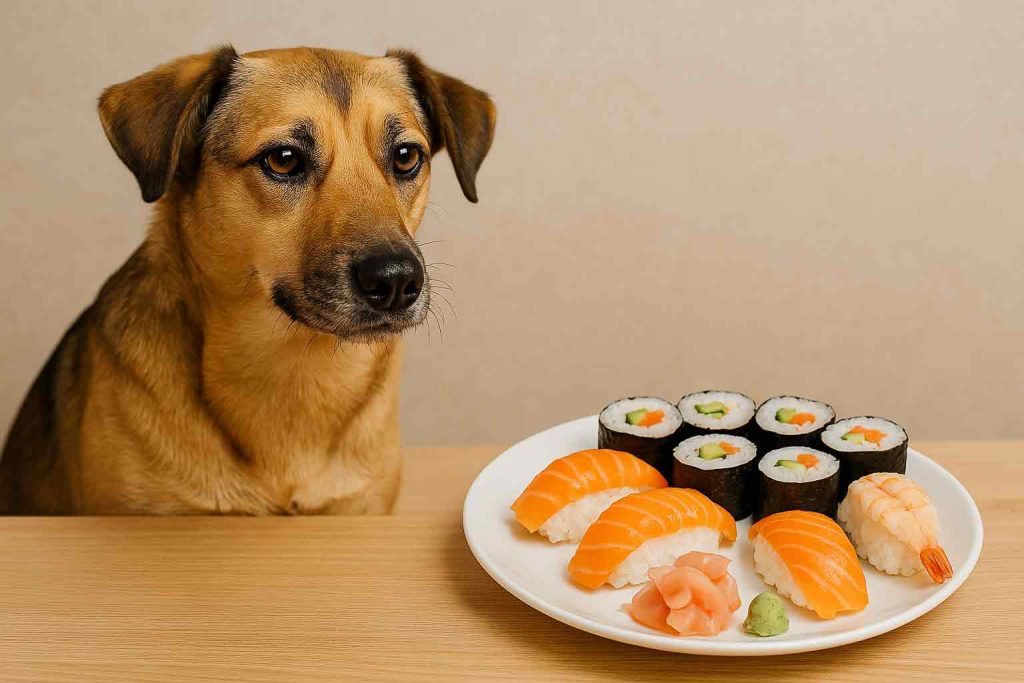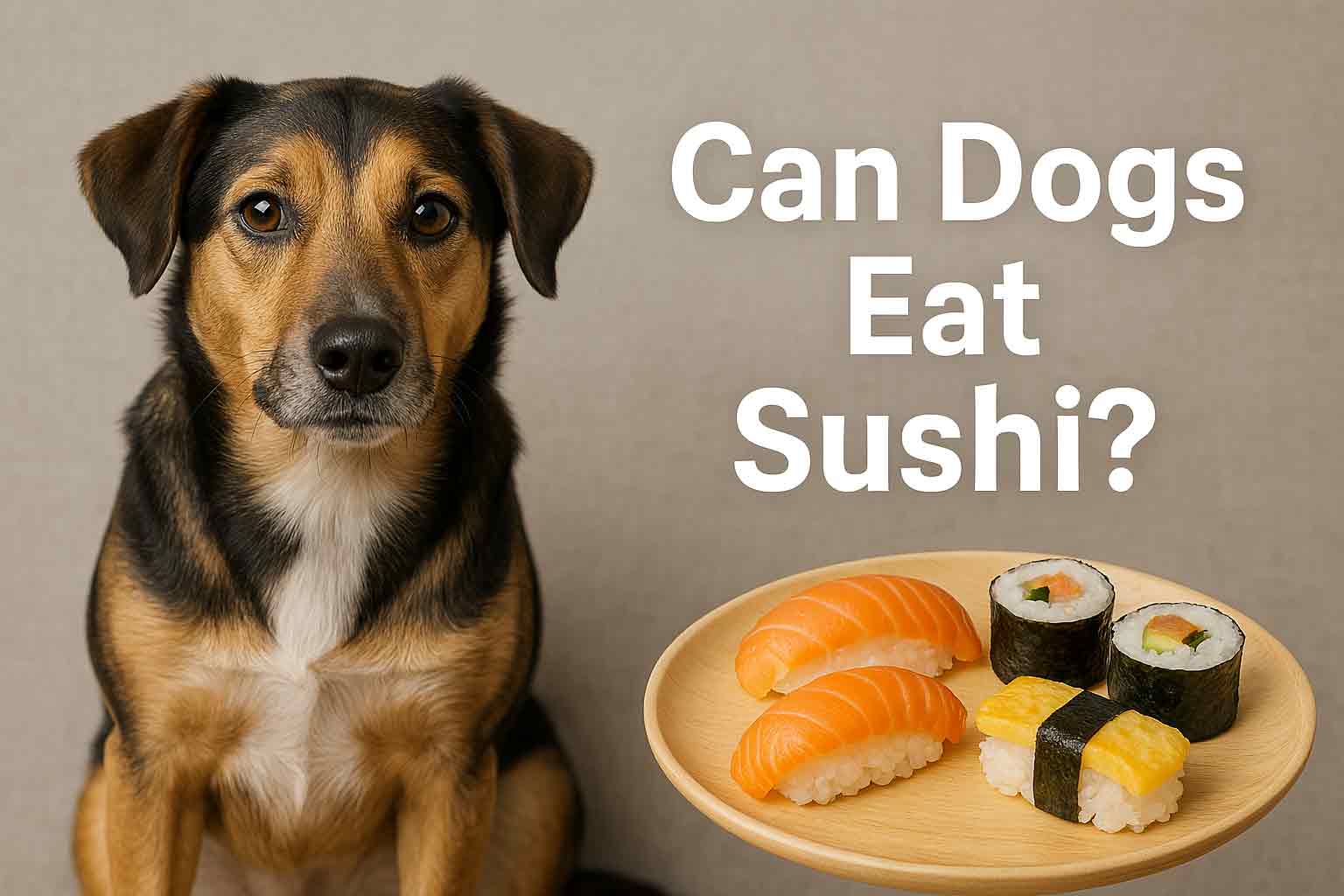Can Dogs Eat Sushi? A Comprehensive Guide for Pet Parents
Table of Contents
- 1. Introduction
- 2. What Is Sushi? Understanding the Basics
- 3. Can Dogs Eat Sushi? Quick Answer
- 4. Risks of Feeding Sushi to Dogs
- 5. Is Raw Fish Safe for Dogs?
- 6. Ingredients in Sushi That Are Harmful to Dogs
- 7. Dog-Friendly Sushi: Safe Alternatives
- 8. What to Do if Your Dog Eats Sushi
- 9. Homemade Sushi Recipes for Dogs
- 10. Frequently Asked Questions
- 11. Final Thoughts: Can Dogs Eat Sushi?
- 12. Key Takeaways
Introduction
If you’re enjoying sushi and your furry friend gives you those irresistible puppy eyes, you may wonder, can dogs eat sushi? With sushi’s mix of raw fish, rice, seaweed, and vegetables, it seems like it might be safe—but it’s not that simple. This guide breaks down everything you need to know before feeding your dog sushi.
What Is Sushi? Understanding the Basics
Sushi is a Japanese dish typically made with vinegared rice and a variety of toppings or fillings, such as raw or cooked fish, vegetables, and seaweed. While it’s a healthy food for humans, not all sushi ingredients are suitable—or safe—for dogs.
Common sushi types include:
- Nigiri (fish on top of rice)
- Maki (rolled with seaweed)
- Sashimi (raw fish only)
- Uramaki (inside-out rolls)
Each type of sushi comes with its own ingredients and potential risks for pets.
Can Dogs Eat Sushi? Quick Answer
Dogs can eat some types of sushi in moderation, but many ingredients can be harmful. While a bite or two may not be dangerous, sushi containing raw fish, spicy sauces, or artificial ingredients should be avoided. Always check each component before offering sushi to your dog.
Risks of Feeding Sushi to Dogs
Feeding sushi to dogs carries several risks:
1. Raw Fish Parasites
Raw fish can contain parasites such as Anisakis or tapeworms, which can make your dog very sick.
2. High Sodium Content
Soy sauce and pickled ingredients like ginger can contain high levels of sodium that are harmful to dogs.
3. Spices and Sauces
Wasabi, spicy mayo, and other sauces can irritate your dog’s stomach and even cause vomiting.
4. Avocado
Avocado contains persin, which can be toxic to dogs in large quantities.
5. Choking Hazards
Seaweed wrappers and raw fish bones can pose choking risks or cause intestinal blockages.
Is Raw Fish Safe for Dogs?
Raw fish is not recommended for dogs. Though some dog diets include raw food, raw fish can carry harmful bacteria and parasites. Unlike fish cooked specifically for dogs, sushi-grade fish isn’t always frozen to a temperature that kills parasites.
Potential issues from raw fish include:
- Parasites (roundworms, flukes)
- Bacterial infections (salmonella, listeria)
- Thiamine deficiency (caused by thiaminase in some raw fish)
If you’re considering feeding fish to your dog, it’s safer to stick with cooked, plain options.
Ingredients in Sushi That Are Harmful to Dogs
Not all sushi is created equal. Here are some ingredients commonly found in sushi that can be problematic for dogs:
- Soy sauce: High in sodium and often contains preservatives
- Wasabi: Spicy and can cause stomach upset
- Pickled ginger: May include xylitol or artificial sweeteners
- Imitation crab (surimi): Contains additives, salt, and sugar
- Cream cheese: Dogs can be lactose intolerant
- Tempura (fried items): High in fat and calories
- Rice vinegar: Contains sugar and sodium
Always read ingredient lists if you’re considering sharing your sushi.

Dog-Friendly Sushi: Safe Alternatives
If you want to treat your dog to a sushi-style snack, consider making or buying dog-safe sushi rolls that include:
- Cooked fish (like salmon or tilapia, no bones, no seasoning)
- Cucumber slices
- Plain white rice (in moderation)
- Nori (plain, unsalted seaweed)
- Carrots or sweet potatoes (cooked and mashed)
These ingredients are safe and nutritious, and you can wrap them into small rolls for a fun presentation.
What to Do if Your Dog Eats Sushi
If your dog sneaks a bite of sushi off your plate, don’t panic. Follow these steps:
Step 1: Assess What They Ate
Check which type of sushi and ingredients were involved. Was it raw fish, avocado, or something spicy?
Step 2: Watch for Symptoms
Common signs of trouble include:
- Vomiting or diarrhea
- Excessive drooling
- Lethargy
- Signs of pain or discomfort
Step 3: Call Your Vet
If your dog has eaten raw fish, spicy ingredients, or shows any symptoms, call your veterinarian immediately.
Homemade Sushi Recipes for Dogs
Want to spoil your pup with sushi-inspired snacks? Try these homemade dog sushi recipes:
Doggie Sushi Rolls
Ingredients:
- Cooked salmon or chicken
- Cooked white rice
- Cucumber sticks
- Nori (unsalted)
Instructions:
- Lay out a sheet of nori
- Add a thin layer of rice
- Place meat and veggies in the center
- Roll tightly and slice into bite-sized pieces
Sweet Potato Tuna Bites
Ingredients:
- Mashed sweet potato
- Canned tuna in water (drained)
- Rolled into mini balls or “nigiri” style
These recipes are safe, easy, and delicious for dogs.
Frequently Asked Questions
Can Dogs Eat Sushi Rice?
Yes, but only in small amounts. Sushi rice contains sugar and vinegar, which aren’t ideal in large quantities.
Can Dogs Eat Seaweed from Sushi?
Plain, unsalted seaweed (like nori) is generally safe, but flavored or salted varieties should be avoided.
What If My Dog Ate Wasabi?
Wasabi can cause burning in the mouth, vomiting, or stomach upset. Offer fresh water and contact your vet if symptoms persist.
Is Avocado in Sushi Safe for Dogs?
Avocado can be dangerous for dogs in large amounts, particularly the pit and skin. The flesh has lower toxicity but should still be avoided.
Final Thoughts: Can Dogs Eat Sushi?
So, can dogs eat sushi? In small amounts and with the right ingredients, yes—but caution is crucial. Many popular sushi components can be dangerous or irritating to dogs. Raw fish, spicy sauces, and high-sodium condiments are particularly concerning.
Stick to homemade or vet-approved dog-friendly sushi alternatives to keep your furry friend safe and satisfied. If your dog accidentally eats sushi, monitor them closely and call your vet if anything seems off.
Key Takeaways
- Some sushi ingredients are safe for dogs, but many are not.
- Avoid raw fish, spicy sauces, avocado, and soy sauce.
- Dog-friendly sushi can be made with cooked fish, rice, and veggies.
- Call your vet if your dog eats sushi and shows symptoms.
- Moderation and ingredient awareness are key when sharing human food with dogs.
By understanding the risks and making safer choices, you can treat your dog to something special—without risking their health.







